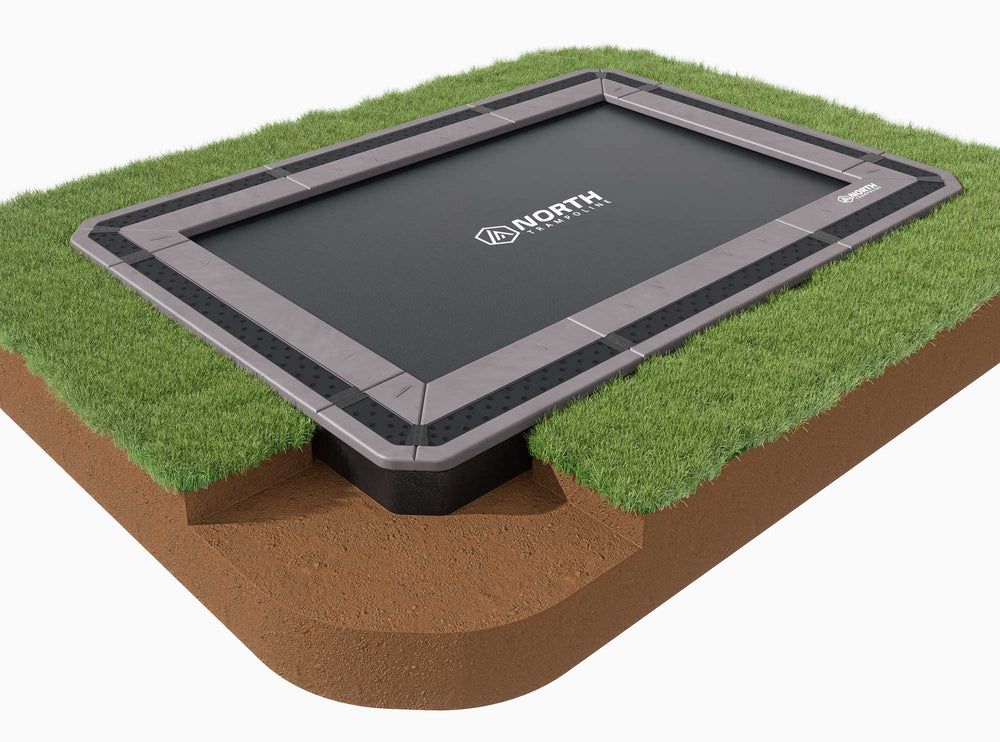When Was Trampoline Added to the Olympics
The trampoline is one of the most thrilling and visually stunning sports featured in modern gymnastics. Its combination of athletic precision, aerial control, and acrobatics captivates audiences around the world. But many people are surprised to learn that this exciting sport is a relatively new addition to the Olympic Games. So, when was trampoline added to the Olympics? The answer lies in a fascinating journey that stretches from a backyard invention to a world-recognized competitive event. Understanding this history not only highlights the evolution of the trampoline but also shows how innovation and athletic creativity can reach global heights.

The Origins of the Trampoline
The trampoline was invented in the early 1930s by George Nissen, an American gymnast and diver, along with his coach Larry Griswold. Inspired by the safety nets used in circus performances, Nissen built the first trampoline from canvas stretched over a steel frame. His goal was to create a training device for gymnasts and divers that would help them practice aerial movements safely. Over time, trampolines became popular for both training and recreation. They appeared in schools, parks, and homes around the world. This widespread popularity eventually led to organized competitions and, ultimately, Olympic recognition. For families interested in recreational trampolines, you can explore more fun ideas through Kids World Play Systems.
Early Competitive Trampoline Events
Competitive trampoline gymnastics began in the mid-20th century, decades before it became an Olympic event. The first World Championships were held in London in 1964, organized by the International Trampoline Federation (FIT). These early competitions featured both men’s and women’s individual events and showcased incredible skill levels. As the sport gained attention, countries across Europe, North America, and Asia formed national teams. The sport’s blend of artistry and athleticism made it a natural fit for international competition. However, despite its growing popularity, it took many years for trampoline gymnastics to be officially recognized by the International Olympic Committee (IOC).
The Road to Olympic Recognition
Trampoline gymnastics spent decades developing a strong global following before finally catching the attention of Olympic organizers. The key turning point came in the 1990s when the International Gymnastics Federation (FIG) took the sport under its wing. This move standardized rules, scoring systems, and judging criteria, aligning trampoline with other gymnastics disciplines such as artistic and rhythmic gymnastics. With an established structure and international appeal, the trampoline was ready for the Olympic stage. The result of this long journey was historic, trampoline gymnastics made its debut at the 2000 Sydney Olympic Games, nearly seventy years after its invention.

The 2000 Sydney Olympics: A Historic Debut
The debut of trampoline gymnastics at the 2000 Sydney Olympics marked a defining moment for the sport. Both men’s and women’s individual events were included, with athletes performing routines featuring multiple flips and twists at remarkable heights. The event was an instant hit among spectators. The combination of grace, power, and mid-air control captured the essence of Olympic athleticism. Athletes from around the world, including China, Russia, and Canada, quickly became household names for their performances. Since then, trampoline gymnastics has been a permanent part of the Olympic gymnastics program, continuing to inspire new generations of athletes. You can learn more about official Olympic disciplines and trampoline history at Olympics.com.
How Olympic Trampoline Competitions Work
Olympic trampoline competitions are structured to highlight both technical precision and artistic performance. Each athlete performs two routines: one compulsory and one voluntary. The compulsory routine includes specific elements that demonstrate control, height, and form. The voluntary routine allows athletes to showcase creativity through complex flips and twists. Judges score performances based on difficulty, execution, and time of flight, the total time an athlete spends in the air. This scoring method ensures that trampoline gymnastics rewards not just daring tricks but also stability and control. According to USA Gymnastics, elite athletes can reach heights of up to 30 feet during their routines, making trampoline one of the most visually spectacular events in the Olympic lineup.
Notable Olympic Trampoline Moments
Since its debut, trampoline gymnastics has produced many memorable Olympic moments. In Sydney 2000, Irina Karavaeva of Russia became the first-ever Olympic gold medalist in women’s trampoline, while Alexander Moskalenko won the men’s title. Their victories set the standard for future generations. China soon emerged as a dominant force in the sport, with athletes like He Wenna and Dong Dong earning multiple Olympic medals. Each Olympic cycle brings new stars and innovations in performance, as athletes push the boundaries of what is possible in mid-air. These moments remind fans that trampoline gymnastics combines both athletic mastery and creative artistry.

Training and Safety in Trampoline Gymnastics
While Olympic trampoline routines look effortless, the training behind them is demanding and precise. Athletes spend years perfecting their timing, balance, and coordination. Safety is a top priority, especially during high-difficulty routines. Trampoline training areas use safety mats and spotting belts to reduce injury risks. Proper technique and progressive skill development are essential for success. Families and recreational users should take note that Olympic-level trampolines differ greatly from backyard versions. Home trampolines are designed for fun, while professional ones require strict supervision and advanced training. To learn about trampoline safety in everyday use, you can also read Are Trampoline Parks Dangerous once that article is available.
How the Sport Has Evolved Since 2000
Since being added to the Olympics, trampoline gymnastics has evolved dramatically. The level of difficulty has increased, with athletes performing more complex combinations of flips and twists than ever before. Technology has also advanced, with improved trampoline bed materials allowing higher bounces and greater consistency. Scoring has become more precise, supported by modern measurement tools that track jump height and rotation speed. Beyond the Olympics, trampoline gymnastics has inspired related sports such as double mini-trampoline and synchronized trampoline, both of which feature in world championships and international competitions.
Global Influence and Popularity
The Olympic inclusion of trampoline gymnastics has helped the sport reach new audiences worldwide. It has inspired children to take up gymnastics, encouraged more clubs to offer trampoline training, and elevated the visibility of acrobatic sports in general. Today, trampoline is recognized not just as a recreational activity but as a respected athletic discipline. The global appeal continues to grow, with countries investing in training facilities and youth programs to develop future champions. The sport’s Olympic recognition in 2000 played a major role in transforming it from a niche discipline into a global phenomenon.

The Connection Between Play and Professional Sport
Interestingly, the trampoline’s journey from backyard fun to Olympic competition mirrors the spirit of play that inspires all great athletes. What begins as simple fun often evolves into lifelong passion and dedication. Families who encourage safe, active play at home help children build the coordination and confidence that can one day lead to higher levels of competition. Whether it’s casual bouncing or structured gymnastics training, trampolines continue to bridge the gap between recreation and sport. At Kids World Play Systems, we believe every bounce begins with imagination and ends with growth.
Conclusion
So, when was trampoline added to the Olympics? It officially joined the Olympic program in the year 2000 at the Sydney Games. What started as an innovative training tool in the 1930s has become one of the most exhilarating events in gymnastics. Olympic trampoline combines grace, strength, and courage, inspiring athletes and audiences alike. Its inclusion in the Games symbolizes the power of creativity and determination. If you’re interested in exploring trampolines for recreation or fitness, you can connect with our team through the contact page at Kids World Play Systems. With the right equipment, supervision, and enthusiasm, anyone can enjoy the spirit of this Olympic sport safely at home.
